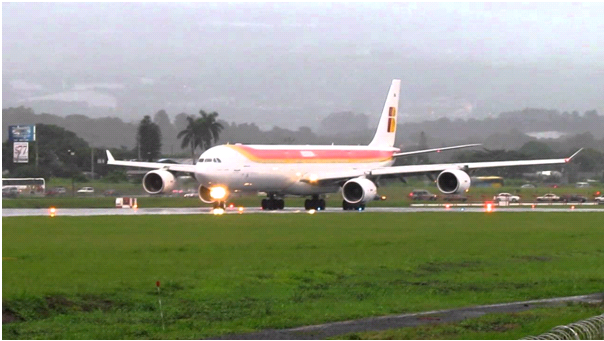Leeham News and Analysis
There's more to real news than a news release.
Irkut MC-21, first analysis
By Bjorn Fehrm
Subscription required.
Introduction
Feb. 08, 2016, © Leeham Co: We recently covered China’s COMAC C919 and now the time has come to the other new narrow body aircraft from the old Communist bloc, the Russian MC-21.
The aircraft is called Irkut MC-21. Not many have heard of Irkut, so the first reaction is that this aircraft is made by a new Russian aircraft firm. The change is that United Aircraft (the Russian aircraft industry holding company) this time called the aircraft after its manufacturing company and not the design bureau, Yakovlev, that Irkut acquired in 2004. There are discussions to change back to the project’s original name Yakovlev 242 once certification is done.
When we looked at the first civil airliner that the Russian federation designed after the fall of Soviet Union, the Sukhoi Superjet 100, we found a well designed aircraft equipped with Western system. The MC-21 follows the same lines, but has more Russian technological development. It is therefore well worth a look.
Summary:
- The MC-21 has its own profile. It is not a copy of a Western aircraft. It has a wider cabin than the A320, a wing which allows a higher cruise speed and a higher capacity in its base variant, the MC-21-300.
- To make a meaningful comparison between the MC-21 and established aircraft, we have chosen to compare the MC-21-200 with the Airbus A320neo, as the MC-21-300 is larger than the A320neo but smaller than an A321neo. The MC-21-200 is closer in size to an A320neo. Read more
No fear of C919 for a generation
Nov. 4, 2015, © Leeham Co. The first COMAC C919 was rolled out of the factory over the weekend, China’s mainline entry into the fiercely competitive arena now “owned” by the Airbus-Boeing duopoly.
COMAC C919. Click on image to enlarge. Photo via Google images.
Although the two giants each has said China is the next competitor they will have to face, the Big Two have nothing to worry about for a generation to come.
Here’s why.
ISTAT Europe 2015 in Prague: LCCs and Turkish airways take over Europe
By Bjorn Fehrm
06 October 2015, ©. Leeham Co: The global airline industry is on a steady course as a whole, but there are dramatic changes within Europe as low cost carriers, plus Turkish Airlines, redraw the competitive landscape.
China’s current economic softness raises concerns, with an independent analysis concluding that economic growth here is 2%-3% instead of the announced rate of 7%-8%.
Still, the mixed messages given at the annual ISTAT meeting in Europe this week didn’t put a damper on the mood of 1,200 delegates here in Prague.
- The airlines are fine for 2015 as the fuel price is low but what about 2016? China is braking to a halt and Asia is getting infected? Will the infection spread? Will the airlines return to bad results?
- What about the European airline industry? Can the low costs units of IAG, Lufthansa and Air France-KLM compete with the up-and-coming LCCs? Who is king of long haul travel out of Europe?
- What about the order glut? When Asia slows, will the order bubble break?
Airbus gearing toward 63 A320s per month; Boeing sure to follow
Oct. 5, 2015, © Leeham Co. Airbus appears to be closing in on a decision to boost the production rate of the A320 family to 63/mo by the end of the decade, a new report from Bernstein Research Group says.
Boeing is sure to follow with rate boosts for the 737, Bernstein writes in an Oct. 1 note.
Leeham Co. has been predicting these moves all year, and in LNC’s interview with Airbus Group CEO Tom Enders last month at the opening of the A320 Final Assembly Line (FAL) in Mobile (AL), Enders indicated the decision to boost rates would be made by the end of the year.






 Subscription required.
Subscription required.